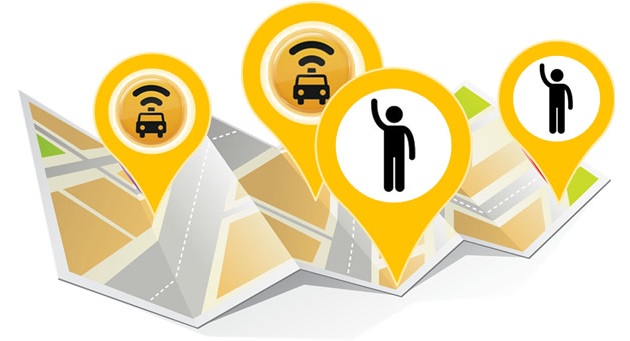Онлайн заказ такси "Терминал"
Первый онлайн заказ киевского такси в интернете представила наша компания. Онлайн заказ позволяет нашему такси предоставить скорейшем образом вам машину такси минуя "телефонный звонок". Вам не надо ожидать очереди в часы пик заказов такси. Экономите свои деньги на мобильном телефоне, в случае исходящего платного звонка к нам в такси. Ваш телефон остается свободным (наше такси беспокоится чтоб вы не пропустили важный для вас звонок). Вы можете просчитать оптимальный маршрут поездки на такси используя разные способы внесения элементов заказа. Теперь быстрота подачи машины такси зависит только от вас.
Также чтоб не искать в дальнейшем в интернете как заказать такси вы можете занести эту страничку в избранное нажав вверху кнопку или сделав её домашней.
Пожалуйста пользуйтесь! На новой странице вы можете быстро оперативно заказать без диспетчера через нашу новую форму онлайн заказа такси

Выбрать другой город нажми на эту ссылку для заказа такси онлайн
Lotus Evora
 The first all-new Lotus since the iconic Lotus Elise made its debut in 1995, The Lotus Evora enters the sports car market as currently the world's only mid-engined 2+2. Powered by a Lotus-tuned 3.5-litre V6 engine producing 280 PS, and weighing just 1350 kg (prototype specification), the Lotus Evora promises breathtaking performance. During preliminary testing around the famous Nürburgring, the Lotus chassis engineers report that it is extremely agile and great fun to drive - even when clad with the full development disguise that hid the beautiful lines from the prying motor-industry paparazzi.
The first all-new Lotus since the iconic Lotus Elise made its debut in 1995, The Lotus Evora enters the sports car market as currently the world's only mid-engined 2+2. Powered by a Lotus-tuned 3.5-litre V6 engine producing 280 PS, and weighing just 1350 kg (prototype specification), the Lotus Evora promises breathtaking performance. During preliminary testing around the famous Nürburgring, the Lotus chassis engineers report that it is extremely agile and great fun to drive - even when clad with the full development disguise that hid the beautiful lines from the prying motor-industry paparazzi.
In addition to its excellent performance and exemplary handling, the Lotus Evora offers a more refined ownership experience than Lotus's existing smaller four-cylinder models. Its elegantly styled cabin is elegantly trimmed and its equipment list includes contemporary features such as an advanced touch-screen multi-media system and electric power-fold door mirrors.
Because one of the roles of the Lotus Evora is to attract new customers to the Lotus brand, much attention has been paid to its ease of use. Wider, taller door apertures and narrower sills make getting in and out of the cabin a less athletic undertaking than it is in Lotus's smaller sports cars (the Elise, Exige, Europa and 2-Eleven), while the design of the cabin itself will accommodate two 99th percentile (6ft 5in tall) American males in the front seats.
window.google_render_ad();The 'convenience factor' of the Lotus Evora extends to less obvious areas of the car. For instance, beneath the skin the entire front-end structure is a high tech aluminium sacrificial modular unit, attached to the main extruded aluminium tub. This modular unit is designed to deform for maximum safety, and to reduce repair costs in the event of a frontal impact.
The Lotus Evora has been designed with global automotive regulations in mind, and future derivatives are planed, these including amongst others, a convertible.
The Lotus Evora will be hand crafted and built on a dedicated new assembly line within Lotus's advanced manufacturing facility at Hethel in the east of England; capacity limitations will restrict production to approximately 2000 cars a year, ensuring the dynamic new sports car's rarity and exclusivity.
Mike Kimberley, CEO of Group Lotus plc, has this to say about the exciting new model: "The Lotus Evora is the biggest milestone Lotus has achieved since the Elise was born 13 years ago and is part of our bold five year strategic plan, which includes the introduction of new cars and technologies to many more markets around the world. The Lotus Evora also represents Lotus core values of performance through light weight and efficiency and proves that you can have phenomenal performance, fuel efficiency elegant design and practicality all in a class leading mid-engine 2+2 sportscar, which will meet global safety and homologation standards"
Mike Kimberley continues, "Looking to the future, we will continue to research, develop and produce lighter, more efficient vehicles which are linked to our extensive and well-regarded work on all aspects of future fuels, alternative engines and electric and hybrid vehicle solutions for the future. We all have an environmental responsibility to future generations and the Lotus Evora is another example where Lotus is seen to make significant steps towards improving the efficiency and sustainability of the motorcar keeping Britain at the forefront of the high technology motor industry."
THE LOTUS EVORA IN DETAIL
Style or function? Have both... Designed 'in-house' by Lotus Design, the sleek and athletic form uses fluid forms and crisp surfaces to communicate velocity, agility and sophistication. Low and wide with modern cab forward proportions, muscular rear haunches and function optimised hip air intakes this is clearly a serious mid engined sportscar that skilfully hides the practicality of its two plus two capability.
Russell Carr, Head of Lotus Design, led the Lotus Evora's design team with Steven Crijns, Design Manager responsible for the exterior and Anthony Bushell, Senior Designer, responsible for the interior.
"A cornerstone of the design's success was working closely with the technical team to develop a package that allowed us to get the proportions correct," says Head of Design Russell Carr, "The asymmetric wheel sizes, the short rear overhang, long front overhang and cab forward visor screen all contribute to giving the car visual movement and an agile stance. This is incredibly important to us because we want the car's aesthetics to communicate its driving characteristics".
Lotus products have always embodied a perfect balance between form and function and the Lotus Evora successfully continues this heritage. "We never lost sight of the fact that, although this car must provide real world useability, sportscars are emotional purchases and that you have to seduce the customer through beguiling looks and exotic persona. We are, therefore, very proud that we have been able to use technical and user functionality to positively drive the design in key areas and create some of the car's most distinctive features". says Carr.
Ingress and egress, for example, dictated a minimal "step-over" to get into the Lotus Evora. We simply cut away the surface under the door and created a unique and dramatic piece of sculpture that enhances the stance of the car as well as its useability.
Elsewhere, aerodynamic considerations for drag, down force and cooling had significant but positive influence on the overall form and details such as air intakes. A desire to create balanced down force, that increases cornering performance, led to the adoption of, the now, "signature" top exit radiator vent, race car inspired diffuser and "floating rear wing". Drag limitation, drove the dramatic tear-dropped cabin layout and the curvaceous plan view has given the car a more muscular rear shoulder and conveys a level of sophistication appropriate to this market segment.
"We believe that our designs should be honest as well as dramatic and so we are really pleased with the fact that these iconic features all do a real job" says Steven Crijns, Design Manager.



